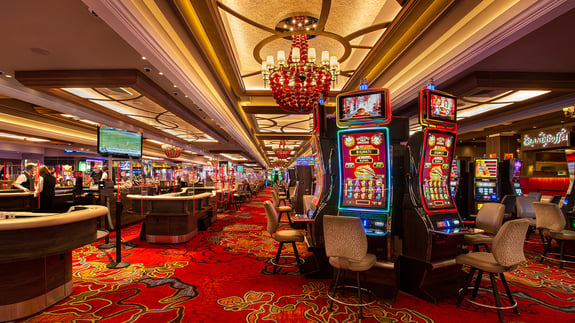
Within a vibrant and stimulating world of gaming establishments, wherein luck and strategy intertwine, hues and aesthetic play a critical role in drawing in players. From the moment players step inside a casino or log into a gaming website, they are immersed in a sightly feast that grabs their attention and entices them to explore further. Vivid colors, captivating graphics, and innovative layouts are carefully crafted to create an environment of thrill and expectation, ultimately improving the gaming encounter.
As gamblers move through the dynamic landscape of casino games, they encounter a range of designs that not only serve aesthetic purposes but also affect feelings and decision-making. Hues like red and yellow symbolize wealth and luck, while calm navy and emeralds can create a more tranquil environment. Understanding how these elements function together allows casinos to create an inviting and energizing atmosphere that encourages players to interact with the games, spend more time at the tables, and increase their general enjoyment.
The Science of Color in Gambling Games
Color plays a critical role in the design of gambling games, influencing players’ emotional states and actions. Lively and vibrant colors, such as crimson and yellow, are often used to incite enthusiasm and draw notice. These hues create a sense immediacy and energy, encouraging gamblers to involve themselves more enthusiastically with the activity. By intentionally selecting tints, designers aim to evoke feelings of pleasure and expectation, which can enhance the total player experience.
Different colors also have psychological associations that can influence how players perceive their chances of success. For example, green is frequently associated with good fortune and abundance, making it a frequent choice in games like roulette and poker setups. This link can cause players to feel more positive and assured in their gameplay, ultimately encouraging them to wager more. BJ88 Grasping these links allows game creators to craft environments that enhance player happiness and loyalty.
In addition, the interface of casino game interfaces often utilizes gradients and differing shades to instruct players’ actions. For case, winning combinations may be emphasized with bright, contrasting hues, creating a visual incentive. This approach reinforces positive outcomes and promotes repeated engagement. By leveraging the science of color, gaming venues can design games that not only draw players but also hold them interested and dedicated in their gaming experience.
Creative Elements that Engage Gamers
The visual appeal of gambling games is primarily influenced by the use of vibrant colors. Lively and striking colors are strategically chosen to create an inviting atmosphere that grabs interest. For instance, crimson and golden hues often signify good fortune and wealth, which is why they are common in the color schemes of gaming machines and table surfaces. These colors not only attract players in, but they also stir emotions associated with thrill and anticipation, enhancing the total gaming experience.
In addition to color, the aesthetic and organization of gambling games play a significant role in captivating players. Games are designed to be intuitive, ensuring that players can easily understand the rules and mechanics. Accessible interfaces, along with captivating graphics and motion, help maintain gamer interest and encourage longer play sessions. The tactile elements, such as the texture of the controls and the sounds of the games, also contribute to a comprehensive sensory experience that keeps players immersed.
Finally, thematic elements in gaming design can significantly influence player choice. Many casino games are inspired by popular culture, myths, or exploration motifs, incorporating symbols and characters that resonate with players. These themes create a sense of engagement and connection, making each game feel distinct. When players feel a bond to the theme, they are more likely to choose that game over others, leading to increased participation and excitement within the casino environment.
Case Studies: Successful Gambling Table Game Designs
One prime example of successful gambling game design is the well-known slot machine series based around blockbuster movies. Games such as those based on the The Wizard of Oz and Game of Thrones utilize vibrant colors and superior graphics to enthrall players in well-known narratives. The employment of lively visuals and captivating sound effects takes the focus of players, building an emotional connection to the theme. This strategy not just fosters longer play but also boosts the overall gaming experience, resulting in increased player retention.
Another successful case is the application of color psychology in table games like 21 and the wheel. Casinos often design these games with dark reds and greens, colors traditionally linked with luck and wealth. For instance, the emerald felt on a blackjack table provides a soothing effect, while the crimson accents in the wheel invite anticipation. This deliberate use of color helps to foster an inviting atmosphere that stimulates players to join in, addressing their psychological impulses and boosting their enjoyment.
Finally, social casino games that include social features and lively, colorful designs have achieved remarkable success in engaging players. Games like Zynga Poker and Slot-O-Mania leverage striking colors and playful animations to create an inviting online environment. The addition of leaderboards, social sharing options, and in-app rewards encourages competition and community, attracting players in for longer sessions. Such designs not only make the games visually attractive but also underscore social interaction, a crucial factor in player retention and engagement within digital casino environments.
